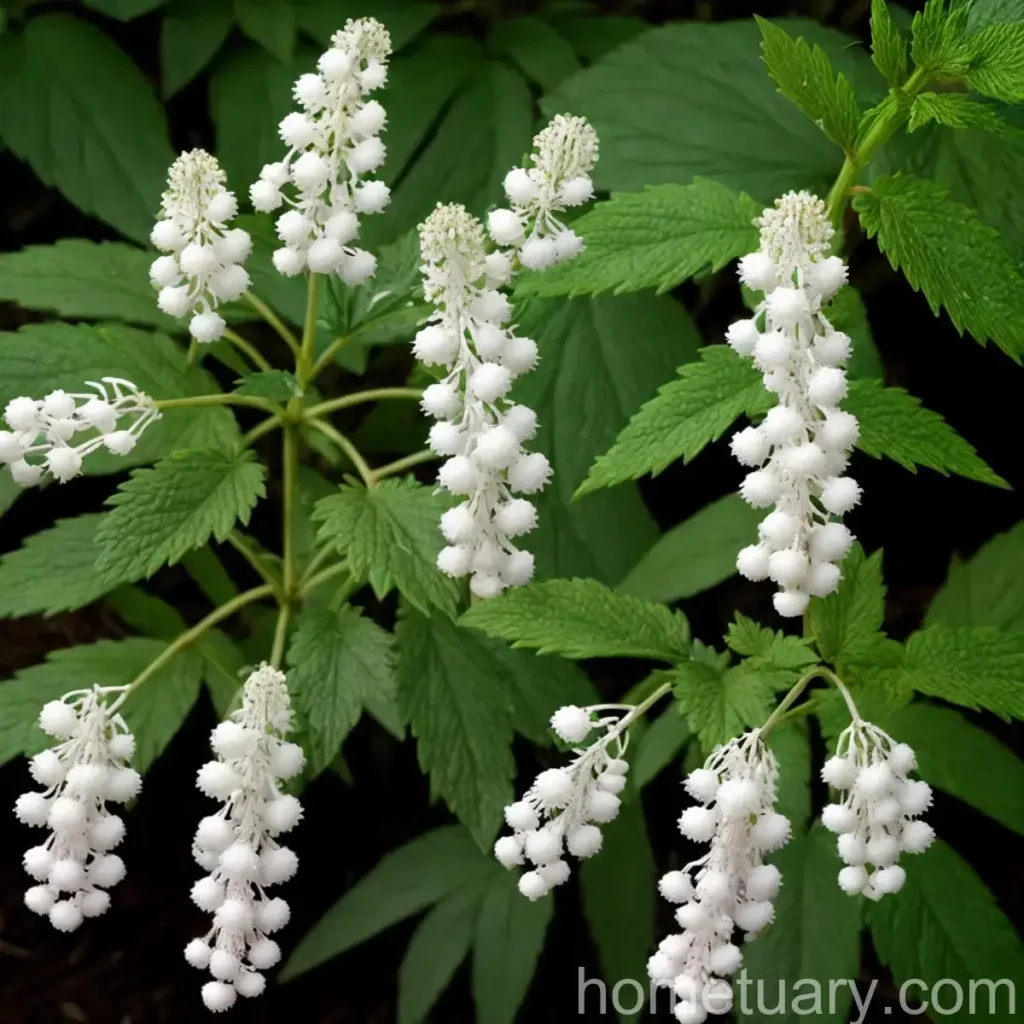White Baneberry (Actaea pachypoda) – A Fascinating Plant with Ethnobotanical Significance
Table of Contents
- Introduction
- Key Takeaways
- General Information
- Culture
- Uses
- Growth Requirements
- Water
- Sunlight
- Fertilizer
- Soil
- Maintenance
- Pruning
- Propagation
- Container Gardening
- Popularity
- Common Diseases and Pests
- Disease Diagnosis
- Common Pests
- Botanist’s Tips
- Fun Facts
- Links to External Resources
Introduction
White baneberry (Actaea pachypoda), also known as doll’s eyes due to the appearance of its fruit, is a mesmerizing plant with wide-ranging cultural and horticultural significance. This blog post will delve into its characteristics, growth requisites, uses, and interesting folklore and symbolism associated with this captivating plant.
Key Takeaways
The key takeaways regarding white baneberry (Actaea pachypoda) encompass its cultural significance, growth requirements, medicinal uses, toxic properties, and wildlife habitat benefits. This blog post will comprehensively cover these key aspects and shed light on the lesser-known facets of this plant.
General Information
White baneberry, scientifically known as Actaea pachypoda, is a herbaceous perennial plant native to eastern North America. It belongs to the Ranunculaceae family and is characterized by its unique white fruits with black dots, which give it the common name “doll’s eyes.”
Culture
White baneberry has been historically relevant to various indigenous communities and holds considerable ethnobotanical significance. Its folklore, traditional uses, and cultural symbolism have contributed to its timeless allure and enduring presence in both natural landscapes and cultivated gardens.
Uses
The uses of white baneberry encompass its medicinal properties, ornamental value, and environmental benefits. To fully appreciate and understand this plant, it is crucial to explore its diverse uses and the cultural and ecological niches it occupies.
Growth Requirements
Successful cultivation of white baneberry requires careful attention to its growth requisites, including water, sunlight, fertilizer, and soil conditions. Understanding and providing for these essentials are essential for fostering healthy and vibrant white baneberry plants.
Water
Actaea pachypoda necessitates consistent moisture, especially during its active growth periods. Adequate watering, ensuring the soil is consistently moist but well-drained, is vital for the plant’s health and vigor.
Sunlight
White baneberry typically thrives in partial to full shade, making it an excellent choice for woodland gardens or shaded border areas. Ensuring appropriate sunlight levels is essential for robust plant growth and blooming.
Fertilizer
When cultivating white baneberry, providing a balanced, organic fertilizer can assist in promoting healthy growth and supporting the plant during its growing season.
Soil
The ideal soil for white baneberry should be rich, humusy, and well-drained. Acidic to neutral soil pH is generally suitable for this plant.
Maintenance
Effective maintenance practices, such as pruning and propagation, are essential for preserving the health and vitality of white baneberry plants.
Pruning
Pruning white baneberry involves the removal of dead or damaged foliage and spent flower stems. This promotes air circulation and prevents the plant from becoming overcrowded.
Propagation
White baneberry can be propagated through seeds. Additionally, division of established plants can be a successful method for increasing the plant population.
Container Gardening
While white baneberry typically thrives in natural woodland settings, it can also be cultivated in containers. Proper care and suitable growing conditions are imperative for successful container gardening with white baneberry.
Popularity
White baneberry has garnered attention and admiration for its unusual fruit and attractive foliage. Its growing popularity in horticultural and naturalistic settings speaks to its aesthetic appeal and captivating presence.
Common Diseases and Pests
Understanding the potential diseases and pests that can affect white baneberry is essential for effective plant management and fostering a healthy growing environment.
Disease Diagnosis
White baneberry may be susceptible to certain fungal diseases and infections, such as powdery mildew. Prompt diagnosis and appropriate treatment measures are crucial for addressing these issues and preventing their spread.
Common Pests
Pests that may affect white baneberry include aphids and snails, which can be managed through various control methods, including manual removal and the application of organic pest deterrents.
Botanist’s Tips
Insights from botanists and horticulturists provide valuable guidance on the cultivation and care of white baneberry. Their expertise can offer invaluable advice for successful plant establishment and maintenance.
Fun Facts
Uncover intriguing and lesser-known facts about white baneberry, shedding light on its ecological interactions, historical uses, and cultural significance.
Links to External Resources
Discover additional information and resources related to white baneberry (Actaea pachypoda) from reputable sources and organizations dedicated to plant science and horticulture.
By delving into the multifaceted aspects of white baneberry, this blog post aims to enhance the understanding and appreciation of this captivating plant, encompassing its unique characteristics, cultural significance, and horticultural value. Whether through its folklore and traditional uses or its role in natural ecosystems, white baneberry holds a prominent place in the realm of plant science and botanical fascination.















